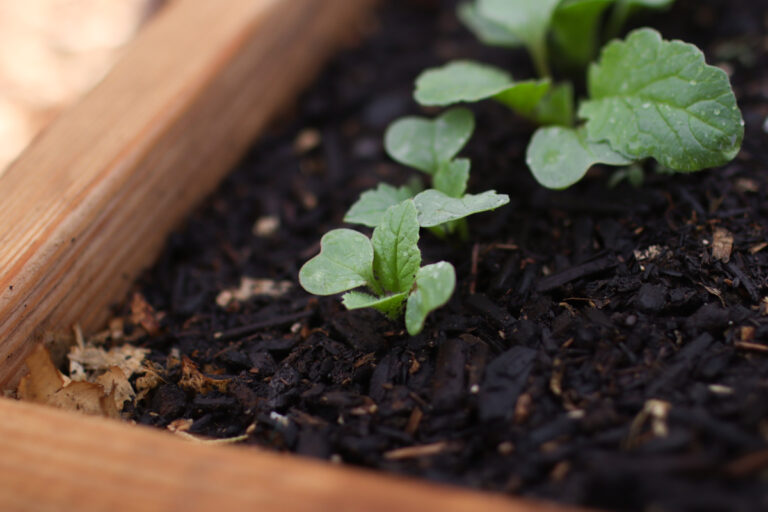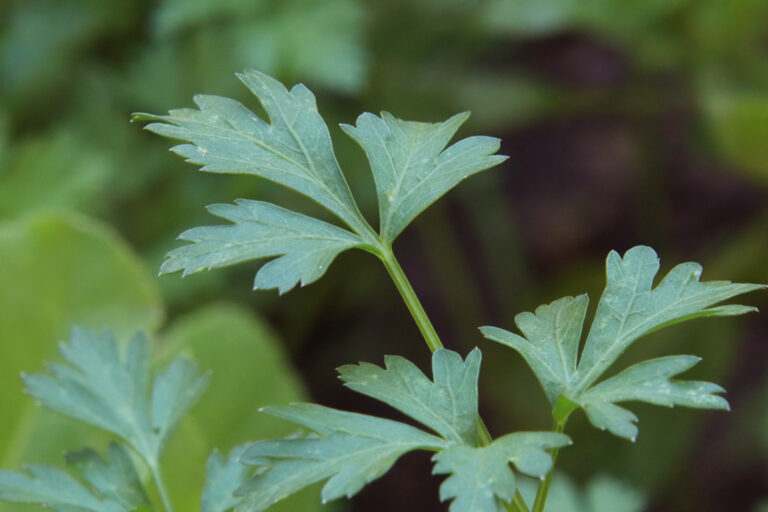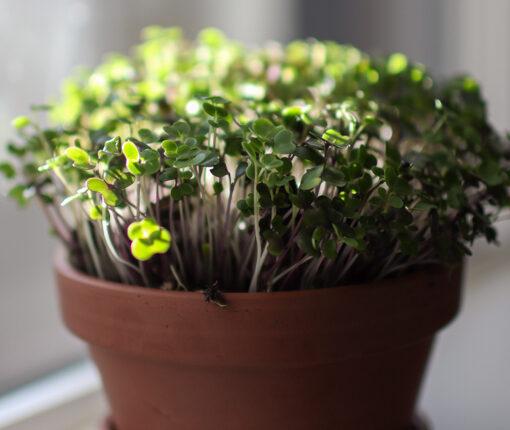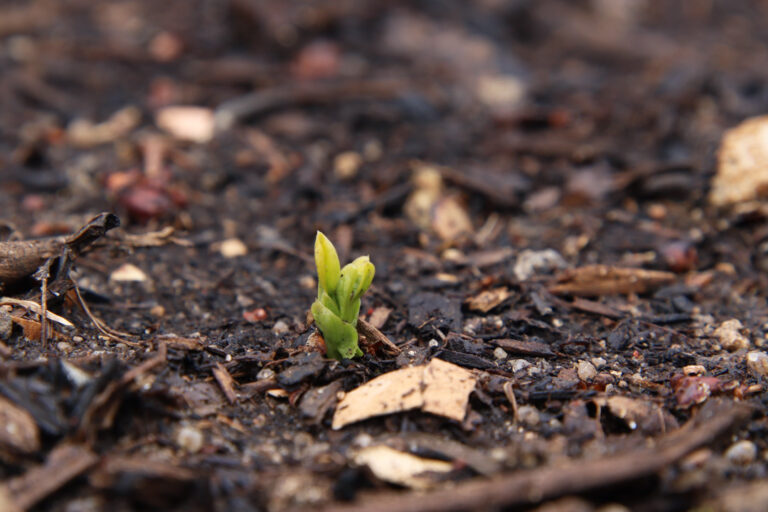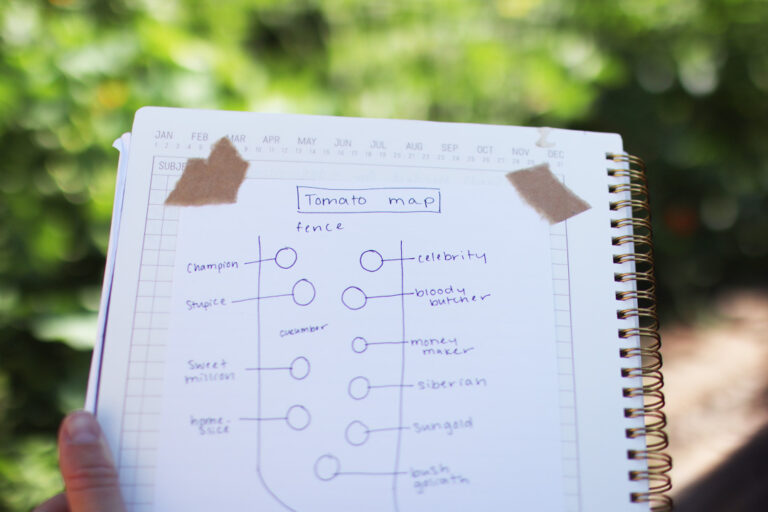How to Grow an Easy Herbal Tea Garden
As you are planning your garden for the coming season, make sure your plans include growing an easy herbal tea garden! This is a great garden project for beginners because all of the plants are simple to grow.
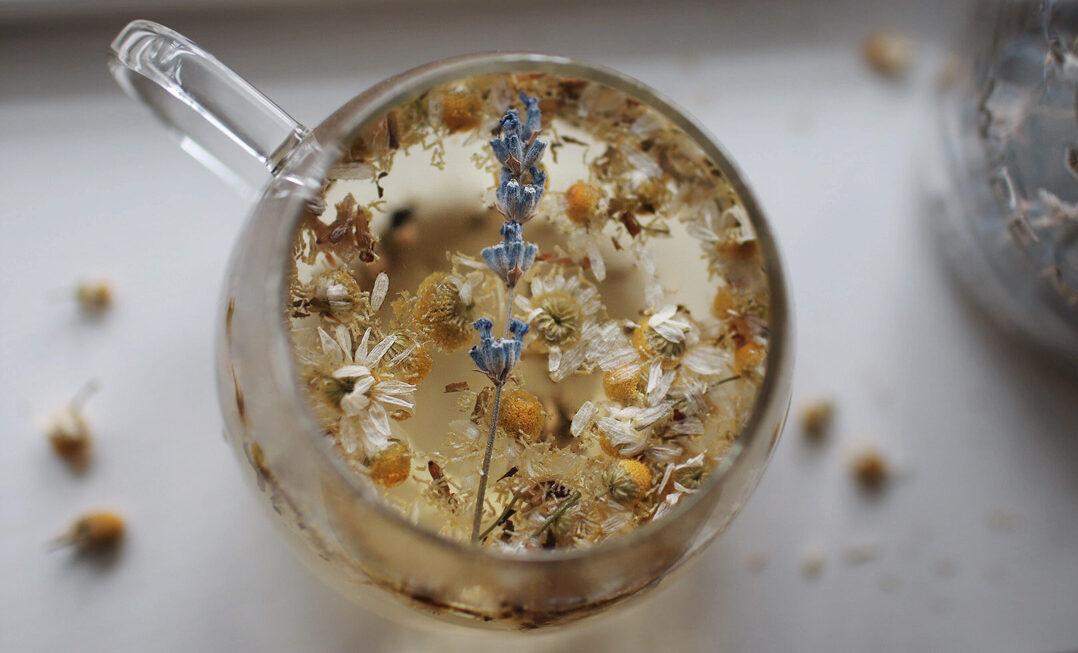
In the dead of winter, there are few things that bring me more joy than a cup of homegrown tea. As I’m putting the tea together, the memories of harvesting the ingredients from my garden naturally come up. The reminiscing is a delight and it’s great to know where my tea came from and how it was grown.
Why You Should Grow an Herbal Tea Garden
Tea is healthy for your body and a warming, calming way to slow down on winter days. However, store-bought teas can be very problematic for your health and the planet. Teabags, for example, often have glues and microplastics in them, putting harmful substances into your body and the soil. The tea itself can also be a problem, particularly if the tea you are buying isn’t organic. Conventionally grown tea ingredients are often heavily sprayed with pesticides and herbicides and because you can’t wash the tea, there is no way to minimize your consumption of these harmful chemicals.
There are some tea brands I like and trust, but the absolute best way to have healthy (and cheap!) tea is to grow it yourself. Growing an herbal tea garden can be incredibly easy and it can be done no matter how much space you have. Many of the plants in a tea garden add beauty to your space and invite pollinators into the garden. It is also incredibly rewarding to brew a cup of tea that you grew from seed, tended to, harvested, and dried yourself.
How to Dry Your Harvests
After harvesting your herbal tea ingredients, it’s best to get them washed and hung for drying as soon as you’re able. Give the plant a quick rinse to get any dirt and bugs off, then dry as well as you can. If it’s a hardy sprig of something, like mint, I will put it in the salad spinner to dry. If it’s more delicate, like lavender, you can gently pat dry with a tea towel.
After that, you need to fully dry out your herbal tea harvest for roughly six weeks. You can do this by bundling the sprigs and hanging them with twine, or laying them out on a screen. If you don’t have a screen, I’ve even had luck placing a loose-knit tea towel over a cooling rack and drying them on that. If you are bundling the herbs, make sure the bundles are small and the sprigs are very dry before they are bundled to avoid mold.
How long the drying takes greatly depends on where you live and the conditions of your house. I live in a very dry climate and we leave our windows open in the summer, so everything dries quickly. If you live somewhere more humid and keep your house more humid, it may take longer. Once the leaves or flowers are dry and crunchy, you can put them in jars to store for winter.
This post contains affiliate links. If you make a purchase through the links, I will earn a small commission at no cost to you. As an Amazon Associate, I earn from qualifying purchases. Read my full disclosure here.
What to Grow in an Herbal Tea Garden
There are many, many different plants that can go into an herbal tea blend and taste amazing. These are the ones that I think are the easiest and tastiest!
Echinacea
Echinacea, also called purple coneflower, is a North American native known for its beautiful pink/purple flowers and its immunity-boosting properties. It’s a perennial that attracts pollinators and adds beauty to the garden. It takes a little patience to grow; you may not get blooms the first year while it’s developing a deep root, but it is very drought-tolerant and will bring you flowers for years to come once established.
Echinacea tea is made up of any or all parts of the plant, including the flowers, leaves, stems, and roots. Harvesting the root is more involved and hardly falls under the “easy herbal garden” umbrella, but you can get plenty of great tea from the rest of the plant. You will need more echinacea plants to get a decent amount of tea, compared to some of the others, but it is a native perennial that fulfills a lot of purposes in the garden.
Use: Flowers, stems, leaves, or roots.
To harvest and dry: Shortly after the bud opens up into a bloom, cut the flower right above the top set of leaves. Wash and remove the petals, cut the stem off of the seed bud. Compost the seed bud and lay the rest out on a screen to dry. Throughout the season, cut a few leaves at a time and do the same to dry.

Mint
Mint is the ultimate refreshing tea and it tastes great hot or iced. There are many types of mint, including peppermint, spearmint, lemon mint and berries, and cream mint. I love growing an assortment of them for some diversity in flavor and looks.
When growing mint, make sure you plant it only in an area that is contained and dedicated to the mint. It is very invasive if not kept under control, by sending out shooters and seeds. The roots will choke out your other plants and the seeds will carry little mint plants all over the garden if you aren’t careful. I recommend growing mint in pots, a small raised bed, or a contained growing bed that’s separate from the rest of your garden.
Mint is a perennial, so you only need to plant it once and it’ll come back year after year.
Use: Leaves
To harvest and dry: Cut the stems right above a node to encourage the plant to branch out from there. Wash and dry the sprigs, then bundle and hang them up.
Lavender
Lavender is a wonderful herbal tea known for the way it soothes and calms. The flowers are gorgeous and it has the most delightful smell when the plant is in bloom. Lavender is a very versatile plant for aromatherapy, decor, and culinary uses, but my favorite way to use it is in a relaxing tea blend. Lavender is a perennial that doesn’t take up a lot of space and if you are careful to harvest the blooms when it’s time, you can often get more than one harvest in a season. It makes a beautiful, whimsical addition to a garden and does well in containers.
Use: Flowers
To Harvest: Each lavender flower has several small blooms on it. You can harvest them when about half the buds are open into tiny flowers. Cut the stems as low down as you can get, gently rinse them, then bundle and hang to dry. Once they’re dry, you can remove the lavender buds from the stem or store the stems in a jar and break off the buds as needed.
I use dried lavender in this easy and delicious Lavender Chamomile Tea Recipe!

Lemon Balm
The bright, fresh flavor of lemon balm is a favorite for fresh iced tea in the summer, but it dries well for a winter pick-me-up too. As part of the mint family, lemon balm is a prolific perennial, though it doesn’t take over as much as mint does, in my experience.
This is a great herbal tea to grow if you like lemon and want something that doesn’t need to be planted every year. Lemon balm grows into a small bush and can be cut from quite often.
Use: Leaves
To harvest and dry: Cut the stems right above a node to encourage the plant to branch out from there. Wash and dry the sprigs, then bundle and hang them up.
Chamomile
Chamomile is a calming, mild tea with many health benefits. There are two types of chamomile: German and Roman.
German chamomile is considered “false chamomile,” though it’s flavor and health benefits are the same. It is an annual that will readily reseed itself and grows up to 24 inches tall.
Roman chamomile is considered “true chamomile” and is a low-growing perennial.
I personally grow German most often because it is prolific and easy to grow. Roman is a great option if you want something that grows lower to the ground, but it doesn’t produce as many flowers. Both types are great and have a place in your garden, but I recommend German chamomile for an herbal tea garden.
Use: Flowers
To harvest and dry: Put a finger on either side of the bloom and pull straight up, removing the flower off of the stem. Alternatively, use small scissors or a harvest rake. Gently wash the flowers and lay them out on a screen to dry. Learn more about drying chamomile here.

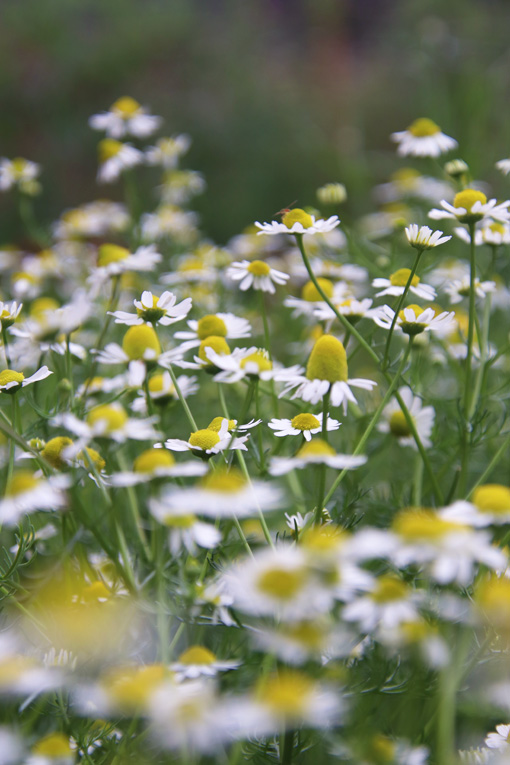
Tulsi/ Holy Basil
Tulsi is a sweet, flavorful tea. It is a powerful herb for health and wellness and is super easy to grow. If you’ve ever grown basil before, you’ll find tulsi very similar. As a heat-loving plant, it is an annual in most growing zones. However, much like basil, the more you harvest the more it grows!
Use: Leaves
To harvest and dry: pinch off the growing tips often to harvest. This will encourage more growth and branching out. Wash the stems, bundle them and dry them. If the stems are too short to tie into a bundle, remove individual leaves and dry on a drying screen.
Calendula
Calendula is a very useful flower to grow. It is great in teas because of its anti-inflammatory and antioxidant components. It’s also a powerful ingredient to have in skincare products, such as this calendula balm.
This is a very easy-to-grow flower with gorgeous blooms that attract pollinators and liven up your tea garden. Calendula is an annual that can be direct sown and forgotten about; it is a great flower to include in your first tea garden because it’s so easy. It will readily reseed itself or you can save the seeds by pulling them off the stems once they are brown and dry.
Use: Flowers
To harvest and dry: Use scissors to clip somewhere at the base of a stem, then remove the stem from the flower. Don’t wash calendula; it has a valuable resin on the flowers that contribute to its health benefits. Lay the flowers out on a screen face down, so the petals are spread out.

Brewing Your Homegrown Herbal Tea
To brew your homegrown herbal tea, you will need a reusable tea bag, tea steeper, or strainer so you aren’t drinking the tea leaves with the tea. I prefer a metal tea steeper, but I’ve also used a tea bag from this Etsy shop and I’ve soaked the tea directly in the water, then strained through a coffee pour over.
The ratio of tea to water for dried tea should be about one heaping teaspoon to eight ounces of boiling water. You may prefer a stronger tea or the ingredients you’ve chosen may need more to be flavorful, so play around with it and find what works for you. If you are brewing fresh tea ingredients, you will need a lot more to get your desired strength.
Steep for about 5 minutes before removing the tea leaves. Add any sweeteners or milks you prefer, or just enjoy plain. Put away any distractions and savor the fact that you grew your very own cup of tea!


